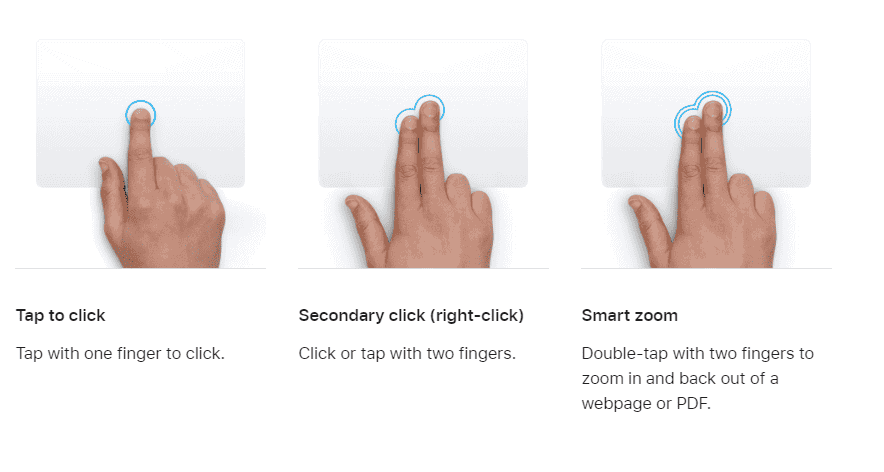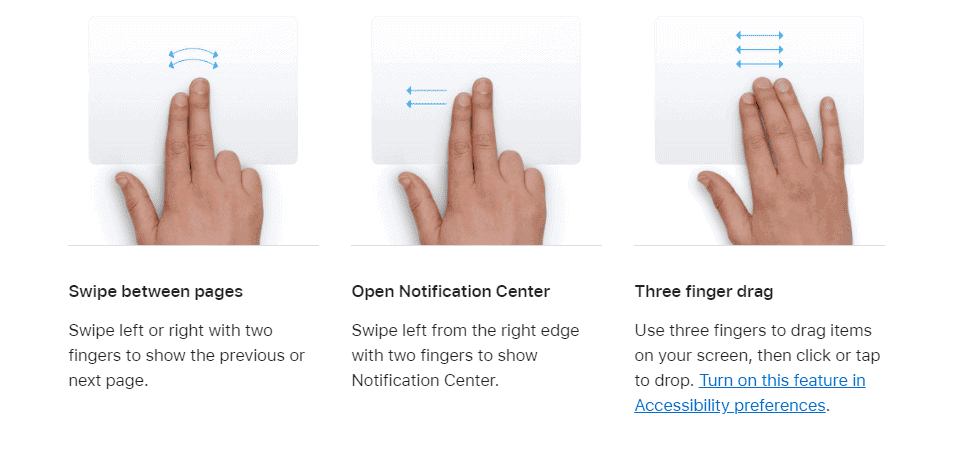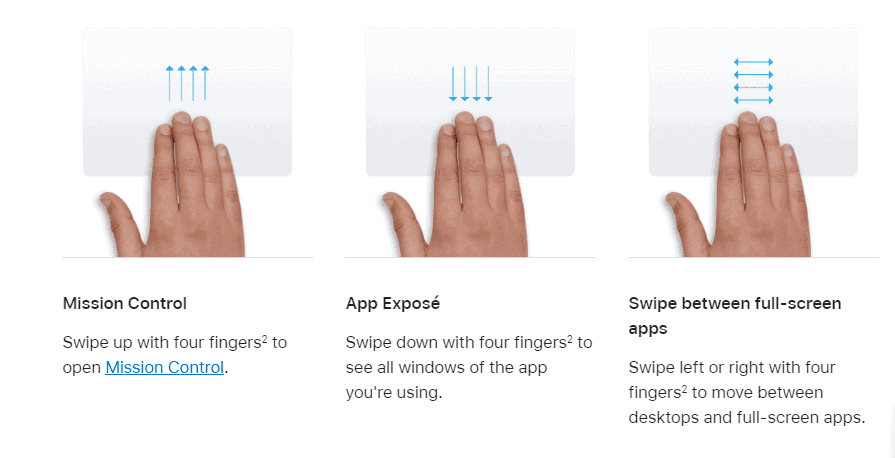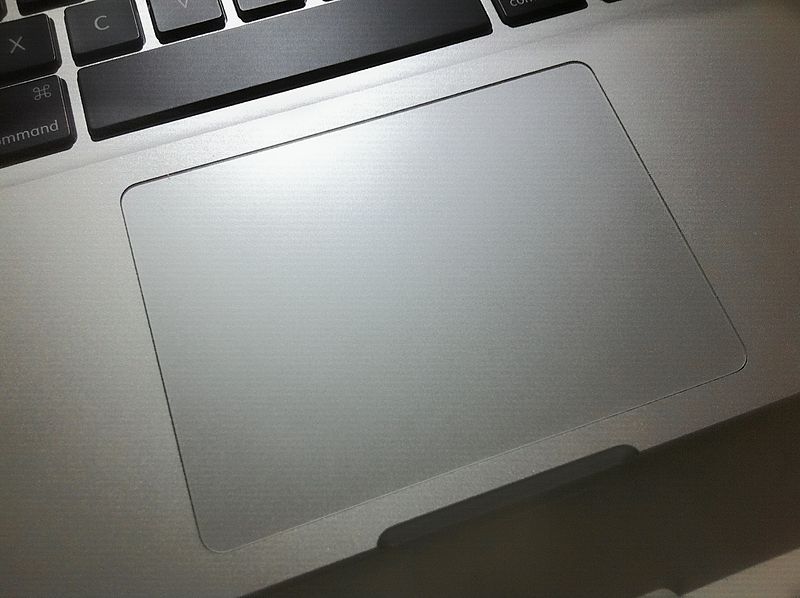Apple’s Multi-Touch trackpad is a key part of the Mac experience. It allows you to use various hand movements to do things on your Mac. You can do things like scrolling through pages and switching between apps with simple swipes and taps. These hand movements can help you work faster and make it easier to use your Mac. Whether you’re new to using a Mac or you’ve been using one for a while, knowing these hand movements can make your daily tasks much easier. To get started, you can customize these hand movements to fit the way you work. You can go to System Preferences on your Mac to change the trackpad settings. This lets you adjust how the hand movements work and choose which ones you want to use. If you’re an advanced user, you can take things even further by using a hand movement called Force click to do more things with your Mac. This makes it even easier to control your Mac and do things quickly.
Trackpad Gestures For Mac & MacBook
| Gesture | Function |
|---|---|
| One-finger click | Clicks an item |
| Two-finger click | Opens a contextual menu (right-click) |
| Drag and drop | Moves files or objects between locations |
| Scroll with two fingers | Scrolls up, down, left, or right |
| Pinch to zoom | Zooms in or out of images, webpages, documents, etc. |
| Three-finger swipe up | Shows Mission Control (view all open windows and spaces) |
| Three-finger swipe left/right | Switches between desktops or full-screen apps |
| Three-finger tap | Looks up the selected word or definition (e.g., in a dictionary) |
| Spread with four fingers | Shows the desktop |
| Pinch with four fingers | Opens Launchpad (app launcher) |
| Four-finger swipe up | Shows Notification Center |
| Four-finger swipe down | Shows all windows of the current app |
| Force click (Force Touch trackpads only) | Deep press for additional options and previews (e.g., peeking at links, previewing files) |
Additional Notes:
- Customization: You can customize trackpad gestures in System Preferences > Trackpad.
- Trackpad Sounds: Consider enabling trackpad sounds for audible feedback.
- Keyboard Shortcuts: Combine trackpad gestures with keyboard shortcuts for even faster navigation.
Key Takeaways
- Understanding Basic and Advanced Gestures: Learn the essential trackpad gestures for daily use and explore advanced gestures for power users.
- Customization Tips: Discover how to tailor trackpad settings to your preferences.
- User Insights: Gain valuable tips from the Reddit community and other users.
- Enhancing Productivity: Utilize gestures to improve your workflow and efficiency.
Apple Touchpad Gestures





Source: Apple.com https://support.apple.com/en-us/102482
Key Takeaways
- Trackpad gestures simplify common Mac tasks with intuitive finger movements.
- Customizing gestures is done through the Trackpad settings in System Preferences.
- Advanced gestures like Force click open up even more ways to interact with a Mac.
Getting Started with Trackpad Gestures
Apple’s trackpad offers a range of intuitive gestures that enhance user interaction. Mastering these gestures can make navigating a Mac or iPad more efficient.
Understanding Basic Gestures
The foundation of using a trackpad efficiently rests on familiarization with its basic gestures. A simple tap with one finger equates to a click, selecting items or executing commands. A two-finger tap, on the other hand, is the equivalent of a right-click or secondary click, opening contextual menus within various applications. For scrolling, a user slides two fingers up or down the trackpad. When it comes to webpages and images, pinching with two fingers allows users to zoom in or out, while rotating two fingers around each other rotates the content if supported by the application. A double-tap with two fingers activates the smart zoom, bringing focus to a specific area like a column of text or an image.
| Gesture | Action |
|---|---|
| Single tap | Click/select item |
| Two-finger tap | Right-click/secondary click |
| Two-finger swipe | Scroll up/down |
| Pinch | Zoom in/out |
| Two-finger rotate | Rotate content |
| Two-finger double-tap | Smart zoom |
Modifying Gesture Settings
Customizing trackpad settings can enhance the user experience. On a Mac, you can access Mouse settings in System Preferences to personalize gestures, like enabling tap to click or adjusting scrolling speed. To customize trackpad behavior, go to System Preferences and then to Trackpad, where you can turn on or off certain gestures. You also have the option to adjust the trackpad’s sensitivity to different gestures for a more personalized experience. This customization is essential for tailoring the trackpad to individual preferences and usage habits.
Advanced Gestures and Productivity
Apple’s multi-touch trackpad and Magic Mouse offer advanced gestures that can boost productivity by providing quick access to frequently used features like Mission Control, Launchpad, and much more.
Using Gestures for Advanced Control
With a multi-touch trackpad or Magic Mouse, users have access to a variety of gestures that serve as shortcuts to perform complex tasks swiftly. To engage Mission Control—a bird’s eye view of all open windows, desktop spaces, and full-screen apps—users can swipe up with three or four fingers. For accessing the Launchpad, which displays all the installed apps, a pinch with thumb and three fingers does the trick. Advanced control extends to features like Exposé, where a swipe down with three fingers will show all windows of the currently active app.
By using Force Touch or a force click, users can access extra features like previewing links or files with a deeper press. This capability, available on newer trackpads, enhances the user experience by enabling quick access to information and the ability to take actions directly from the trackpad.
Managing Apps and Multitasking
Efficient app management and multitasking are essential for productivity. Users can switch between full-screen apps with a four-finger swipe left or right. This gesture simplifies moving from task to task without the need to exit the full-screen mode. To open the App Switcher and swiftly change to a different application, users can perform a one-finger swipe up from the bottom edge of the trackpad, pause in the center of the screen, and then lift the finger.
The trackpad aids in managing app windows as well. For a clear view of the desktop, spreading four fingers apart reveals the desktop by pushing all open windows aside. Conversely, bringing them back together shows all hidden windows again. App Exposé, activated with a swipe down using three fingers, isolates the windows of a specific app, helping to focus on the task at hand.
Gestures also enhance the drag and drop experience. Users press and hold with one finger and use another finger to drag an item. This is particularly useful when organizing files or rearranging apps. Lastly, advanced gestures extend to system controls and searching. A two-finger swipe from the right edge opens the Notification Center. A simple tap brings up Spotlight Search, enabling users to find documents, apps, or perform web searches quickly.







